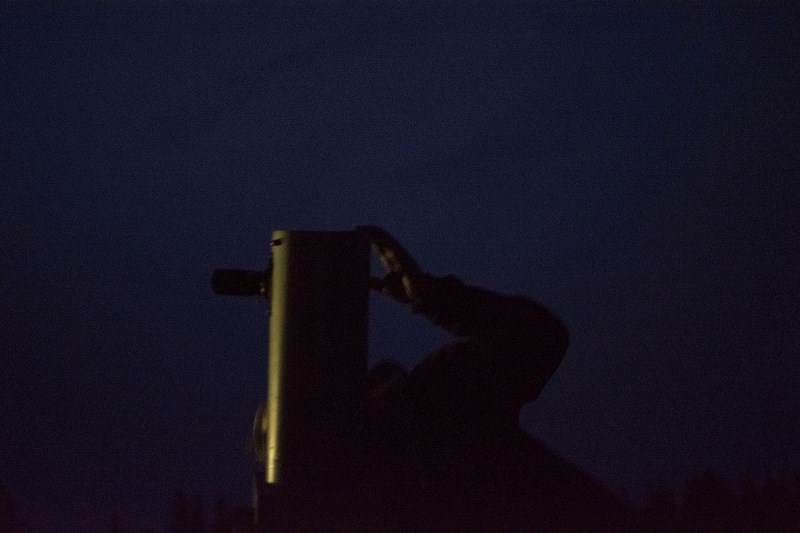It’s the story of many a decommissioned observatory: the centre, once far from its nearest town, is blinded by the light of an expanding municipality.
It happened once in Athabasca, when the then-new Multiplex’s parking lot lights prevented the Athabasca University Geospatial Observatory from detecting faint photon auroras, research scientist Ian Schofield said.
Now, members of the Athabasca University and the Long and Narrow Lake Stewardship Society (LNLSS) hope to designate Narrow Lake – where the university built its new observatory – a dark sky preserve.
On July 29, Science Outreach — Athabasca brought councilor of the Royal Astronomical Society of Canada, Roland Dechesne, to Narrow Lake, where the university built its new observatory. While there, he evaluated the location as a potential dark sky reserve and gave a presentation to about 20 Athabasca locals.
“We’ve got a lot of protected areas across the country,” he said, pointing to a map that showed Jasper National Park, Elk Island Provincial Park and Cypress Hills Interprovincial Park to be dark sky preserves. “But when you think about how much land there, is it’s still just a drop in a bucket.”
Dechesne told the group that the Royal Astronomical Society of Canada has three criteria for a preserve: onsite lighting must shine down and only impact a small portion of the park, light from properties outside the boundary must not shine on the conservation areas and lighting curfews should be encouraged.
The process is more complex than that. LNLSS co-chair Juanita Marcoux said the society is in the process of a very “specific” application process. Now, they are defining the potential reserve’s borders. Afterwards they will take an inventor of the area’s lights and even a measurement of the light that comes from the sky.
Because the smoke from B.C. fires prevents an accurate light reading, Marcoux said Dechesne recommended the not proceed until fall or winter.
Dark sky preserves have a positive impact on nature, humans and observatories, Dechesne said.
In his presentation, he mentioned several animals that are negatively affected by night-time lights: warblers, who need darkness to navigate by constellations and the daphnia water flea, which feeds on algae only in the dark.
When they fleas are disturbed by light it can cause algae blooms.
“Small change, small creature, big impact,” said Dechesne. He also said that light at night has a negative impact on human hormones.
Marcoux expects Narrow Lake to become a dark sky preserve in about two years. The LNLSS has not received any grants for the project yet.



